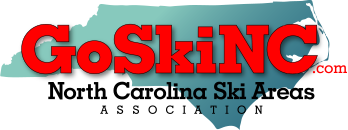Total Economic Impact of N.C. Ski Industry
Exceeded $120 Million in 2002-2003 Season
BANNER ELK – In just four months, the ski industry helped contribute more than $120 million to Western North Carolina’s economy during the 2002-03 season. That’s according to a study conducted for the N.C. Ski Areas Association by Appalachian State University economics professors Steven W. Millsaps and Peter A. Groothuis.
Millsaps and Groothuis surveyed a random sample of skiers at five of the state’s seven resorts to learn about their demographic and socioeconomic characteristics, criteria for selecting ski areas, skiing ability, intent to return for future visits and their spending patterns while visiting a resort area.Their findings were released on November 20, 2003 during a news conference held at Sugar Mountain Resort in Banner Elk. A copy of the report is available for download on this page.
North Carolina’s ski season typically runs from Thanksgiving to mid-March – or about 100 days.
“The results of this survey of spending behavior are significant for two reasons,” Millsaps said. “One is that the magnitude of the spending is large, and, the other is the timing of the spending during the winter months when the number of visitors to the area is small.”
Millsaps and Groothuis found that skiers spent $67.7 million combined on skiing, lodging, meals and on other expenses last season. By using an economic tool known as a multiplier, they estimate that the industry had a total economic impact of almost $120 million as skier dollars were spent and re-spent throughout the local economy on wages and purchases made by workers or ski area operators.
Millsaps said that the ski industry also brings lodgers to area hotels and motels during what otherwise is the lowest time of their season. “Hotel occupancy rates during ski season hovered around 40 percent,” he said. “If the ski industry wasn’t there, the restaurants, lodges and shopping centers would be adversely impacted during these months,” he said.
A total of 544,219 skiers visited N.C. slopes in 2002-03. They spent an average of $124 a day on skiing, lodging, meals and other expenses. Spending at area resorts alone totaled $23.5 million, compared with $5.7 million spent in the 1976-77 season when 338,000 skiers visited the slopes.
Skiers spent $14.5 million on lodging, while restaurant spending was estimated at $7.3 million. They spent $6.2 million on clothing and equipment outside the ski resort, and $3.6 million on food and beverages consumed away from the resort and not in restaurants. Retail shopping totaled an additional $3.4 million.
The study showed that the majority of skiers come from North Carolina, are loyal to the resort they visit and plan to return, and in spite of the popularity of snowboarding with the younger set, most come to the mountains to ski.
“The study is a useful tool in terms of marketing and promotion, but most importantly, it gives us a sense of the overall impact we have on local and regional businesses, not only financially but from an employment point of view” said Kim Jochl, former president of the N.C. Ski Areas Association. “The information helps us understand the broad impact the ski industry has in such a short time frame.”
North Carolina’s seven ski slopes are: Appalachian Ski Mountain, Cataloochee Ski Area, Hawksnest Golf and Ski Resort, Sapphire Valley Ski Area, Ski Beech, Sugar Mountain Resort and Wolf Laurel.
The industry employs a total of 84 year-round employees. During ski season, more than 900 full-time and 800 part-time people are on the payroll, which totals approximately $7 million annually.
Forty percent of skiers came from North Carolina, 18 percent were from Georgia, 16 percent hailed from South Carolina and 14 percent were from Florida.
More than 70 percent of visitors came to resorts to ski, 20 percent came to snowboard and 5 percent to tube.
Ninety percent of those questioned planned to visit the same ski area next season. Twenty-eight percent considered themselves beginning skiers, 27 percent claimed low intermediate skills, 36 percent had high intermediate skills and 9 percent considered themselves expert skiers.
Contacts: Steven Millsaps, professor of economics, Appalachian State University, (828) 262-6080; Gil Adams, president, N.C. Ski Areas Association, (828) 387-2011
The 2009-2010 Economic Study can be viewed here.
The 2014-2015 Economic Value Analysis is also available.
